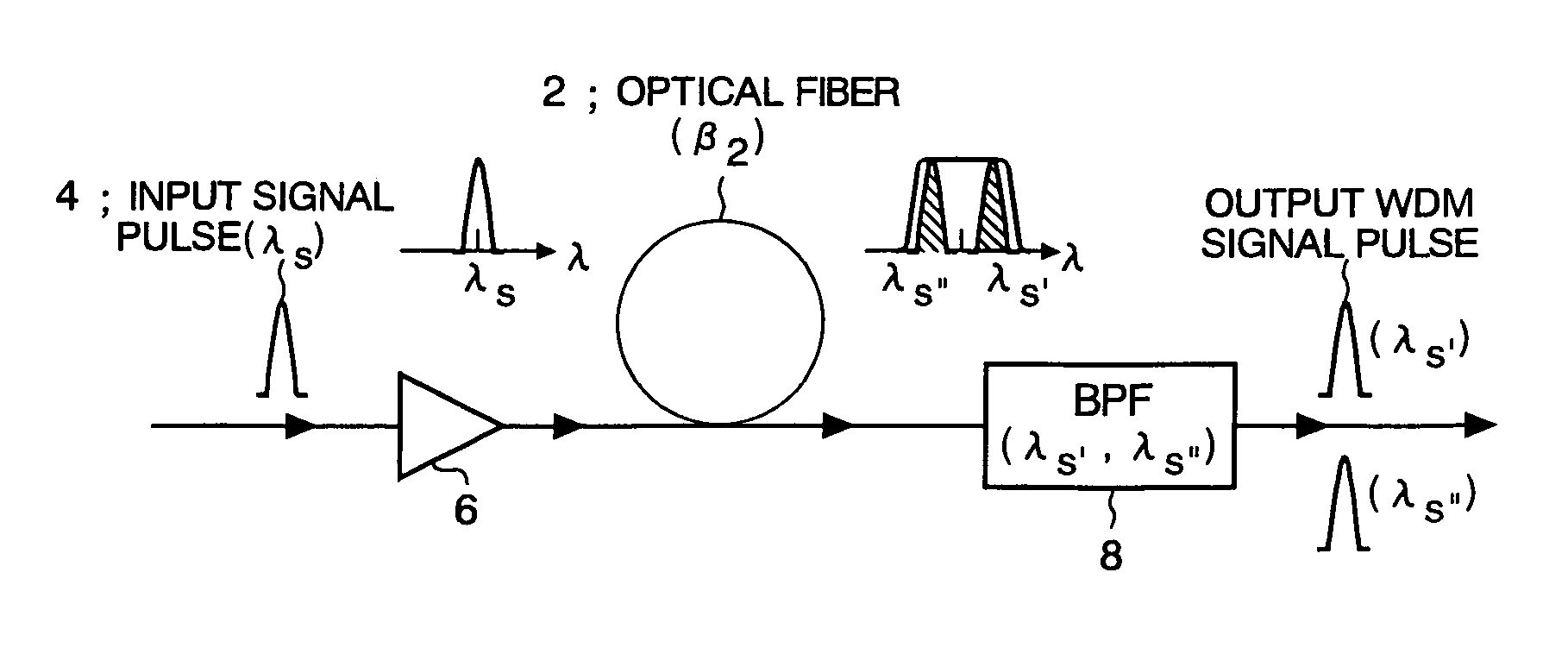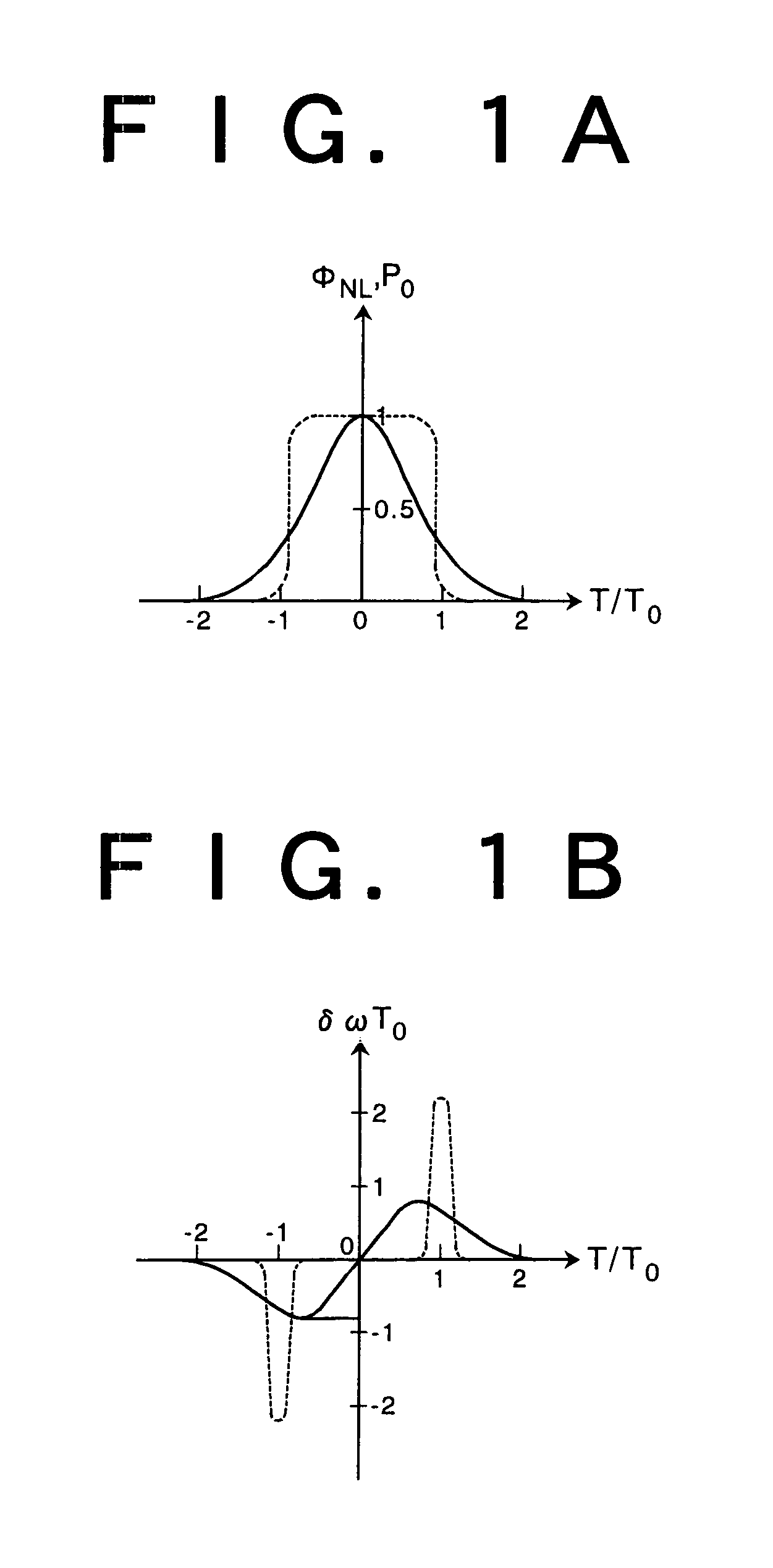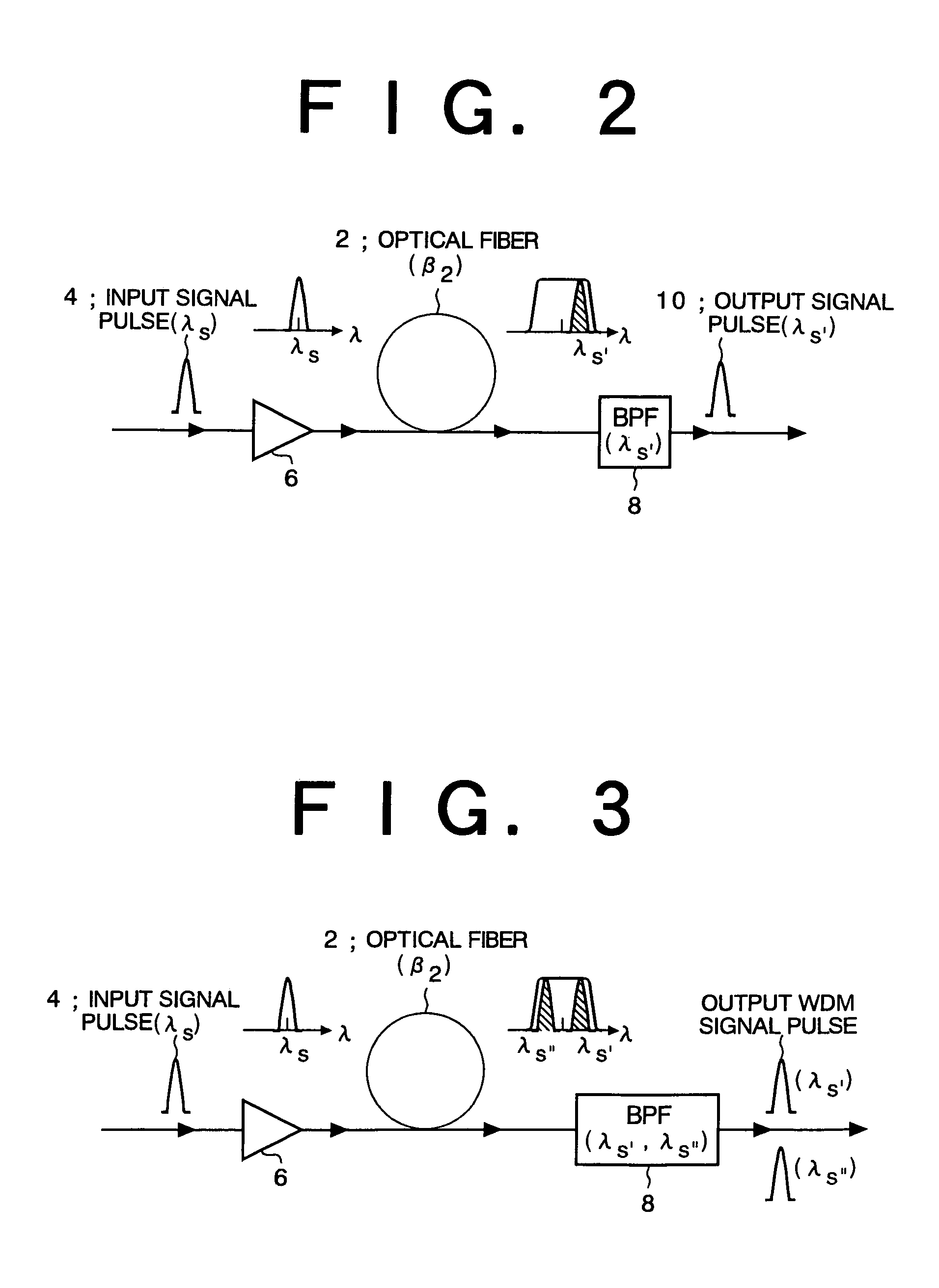Method, device, and system for processing optical signal
a technology of optical signals and optical signals, applied in multiplex communication, cladded optical fibres, instruments, etc., can solve the problems of signal-to-noise ratio, transmission limit, transmission distance limit, etc., and achieve the effect of broadening the spectrum of said clock pulses and extending the spectrum of clock pulses
- Summary
- Abstract
- Description
- Claims
- Application Information
AI Technical Summary
Benefits of technology
Problems solved by technology
Method used
Image
Examples
Embodiment Construction
[0041]Some preferred embodiments of the present invention will now be described in detail with reference to the attached drawings.
[0042]Now consider the case that an optical pulse U(z,T) having a width T0 and a peak power P0 propagates in an optical fiber, where T is time in a coordinate system moving with the optical pulse. In the case that the chromatic dispersion β2 of this optical fiber is not so large and the dispersion length LD=T02 / |β2| is sufficiently larger than the nonlinear length LNL=1 / γP0 (γ is the third-order nonlinear coefficient) to the optical pulse (LD>>LNL), the phase shift øNL(z,T) by SPM (self-phase modulation) is expressed as follows:
[0043]ϕNL(z,T)=U(0,T)2ZeffLNL(1)
where zeff=[1−exp(−αz)] / α is the effective (nonlinear) interaction length.
[0044]In this case, the chirp δωNL is given by the following expression.
[0045]δωNL=∂ϕNL∂T=-∂U(0,T)2∂TzeffLNL(2)
where |U(0,T)|2 corresponds to the peak power, so that Eq. (2) shows that the chirp of the optical pulse become...
PUM
| Property | Measurement | Unit |
|---|---|---|
| length | aaaaa | aaaaa |
| length | aaaaa | aaaaa |
| wavelength | aaaaa | aaaaa |
Abstract
Description
Claims
Application Information
 Login to View More
Login to View More - R&D
- Intellectual Property
- Life Sciences
- Materials
- Tech Scout
- Unparalleled Data Quality
- Higher Quality Content
- 60% Fewer Hallucinations
Browse by: Latest US Patents, China's latest patents, Technical Efficacy Thesaurus, Application Domain, Technology Topic, Popular Technical Reports.
© 2025 PatSnap. All rights reserved.Legal|Privacy policy|Modern Slavery Act Transparency Statement|Sitemap|About US| Contact US: help@patsnap.com



